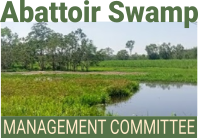Brooklyn Station gets on front foot with fire management regime
Australian Wildlife Conservancy’s Brooklyn Wildlife Sanctuary situated in Northern Queensland is the most biodiverse parcel of private land in Australia. Covering almost 60,000 hectares Brooklyn supports a greater diversity of wildlife than any other single property in Australia. With more than 290 birds, 86 mammal species and 140 reptiles and frogs, Brooklyn is a true hotspot for Australia’s wildlife.
Brooklyn station has several overlapping ecological systems each with their own complex flora and fauna. From uplands in that border the Wet Tropics World Heritage Area to flood plains on the upper Mitchell River.
AWC protects this area and its wildlife through a number of land management and science strategies including fire management, feral herbivore and weed control, feral cat and fox control and in the field science programs. Collaboration with our neighbours and other regional stakeholders is an important part of our conservation strategy.
As recently as this month (June 2017) AWC, with five of Brooklyn’s neighbours, implemented a series of prescribed burns – both aerial and on the ground as part of a co-ordinated regional strategy. This will reduce the risk of extensive late season fires while also reintroducing fire into key habitats where appropriate.
Fire management at the sanctuary itself is complex due to the juxtaposition of ecosystems with different requirements across different parts of the property. AWC’s fire management is a tailored program designed to create a patchwork – or mosaic – of burnt and unburnt areas across the landscape to prevent large late season wildfires which are harmful to wildlife (for example, by changing the structure of habitats and making it easier for feral cats to hunt). Brooklyn is especially vulnerable to late wildfires originating from the Mulligan Highway which transects the property. Early season fires also help control weed species such as Rubber Vine and Stylo species. Recent research is exploring the use of fire to help native species out compete Grader Grass.
Brooklyn has over 164 species of weed on the property. These are controlled by strict vehicle/machinery hygiene, tracks are sprayed using Paraquat Herbicide and then surveyed before traffic is allowed on them.
All tracks are slashed to prevent the spread of weeds by vehicles and no vehicles are allowed off these tracks. The tractor and slasher are cleaned regularly and the slasher has a fan mounted on it to remove debris while working to reduce the risk of spread. Weeds are categorised into threat and abundance and treated by the most effective method available.
Brooklyn protects over 40 threatened species of Australian animals. A survey conducted by our ecologists across 22 sites across the property late last year identified a vast array of important species including Northern Quolls, Yakka Skinks, Rock-wallabies (a hybrid of Mareeba and Godman’s Rock-wallabies) Giant White-tailed Rats, Black-footed Tree-rats and small mammals such as Northern Brown Bandicoots and the Northern Short-tailed Mouse.
Brooklyn also hosts an exceptional variety of bird species, ranging from the Southern Cassowary (Australia’s heaviest bird) to the diminutive Blue-Faced Parrot Finch, and the Red Goshawk, Australia’s rarest bird of prey.
Last year a historic discovery was made by renowned ornithologist and AWC field ecologist John Young. John found a healthy population of one of Australia’s rarest birds – the Buff-breasted Button-quail. The species is so rare that no living member has been photographed and only seven specimens of the animal exist in museum collections.
The bird is restricted to north-east Queensland, with only a hand full of sightings in a small number of locations from eastern Cape York to the area around Brooklyn. The estimated population of the Buff-breasted Button-quail is approximately 500 mature individuals – a number that is likely to be declining.
- Log in to post comments


